 |
Focus features two in-depth reviews each month of fine art, architecture and design exhibitions and events at art museums, galleries and alternative spaces around Japan. The contributors are non-Japanese art critics living in Japan. |
|
|
 |
 |
 |
Pictures of Youth: The Kiyosato Museum of Photographic Arts' "Young Portfolio"
Alice Gordenker |
 |
|
| Hanne van der Woude (Netherlands), "MC1R (Natural Red Hair) -- Monica" (2007) |
Since its founding in Yamanashi Prefecture in 1995, the Kiyosato Museum of Photographic Arts (K*MoPA) has sought to contribute to society by purchasing the work of promising young photographers. Through an annual call for entries, open to anyone 35 or younger and judged by some of Japan's top photographers, the museum has assembled an impressive "Young Portfolio" of more than 5,000 photographs from around the world. Now, to commemorate 20 years of this socially-conscious acquisition program, and to bring the portfolio to a larger audience, the museum has organized its first large-scale exhibition in Tokyo, August 9-24 in the B1 gallery at the Tokyo Metropolitan Museum of Photography.
|
| Jun Minsoo (Korea), "Flowers" (2007) |
|
Mariko Sakaguchi (Japan), "One Hundred Views of Bathing" (2010) |
"Of all the arts today, photography is the easiest to pick up and begin, which makes it an excellent medium for young people to use to express themselves and develop their potential," according to K*MoPA director Eikoh Hosoe, who conceived the "Young Portfolio" program and oversees the annual process for new acquisitions. Now 81, Hosoe was a central figure in postwar photography in Japan and is perhaps most famous for his portraits of author Yukio Mishima ("Ordeal by Roses," 1963) and Kamaitachi, a collaboration with butoh dancer Tatsumi Hijikata that started in 1965.
"For a young artist, having a work purchased by a museum can provide a tremendous boost in confidence," Hosoe told me in a recent interview, recalling the affirmation he himself felt in the early 1970s when the Museum of Modern Art in New York was the first museum in the world to purchase his photographs.
"Very often, young people cannot see what they do well unless someone points it out to them," Hosoe observed. "As a result, they may lose faith in their abilities and stop creating, and even throw out their work. I, for one, destroyed many of my own photographs that I didn't realize showed potential, and I know of many photographers, particularly here in Japan where people live in small apartments, who discarded negatives and prints simply because they didn't have space to keep them," he said. "That is the other aim of our acquisition program -- to collect and preserve photographers' early work that might otherwise be scattered or lost."
|
| The Kiyosato Museum of Photographic Arts (K*MoPA) |
|
K*MoPA Director Eikoh Hosoe (left) reviews 2014 "Young Portfolio" entries with fellow photographers and selection committee members Daido Moriyama and Masato Seto. |
Located in the Kiyosato Highlands, the museum is decidedly off the beaten path. To get there from Tokyo, you take the JR Azusa express train from Shinjuku Station for two hours, change at Kobuchizawa and ride the local Koumi Line for another 24 minutes. From Kiyosato Station there is no direct public transportation to the museum, which is situated in a wooded glen at the end of a quiet road that runs past vacation homes and cornfields. Most visitors arrive by car or taxi.
"If the main object of this museum had been attracting visitors, of course we wouldn't have located it so far from any major urban area," the museum's director of public relations, Naomi Ogawa, allowed. "Rather, we built it here to stimulate the local community and to provide a base for our activity, most of which is devoted to the ‘Young Portfolio' project. We also provide a place in which people can enjoy and appreciate photographs in a beautiful, natural setting." Through September 29, the museum is exhibiting about 150 works by French photographer Robert Doisneau (1912-94), including some that have never previously been shown in Japan.
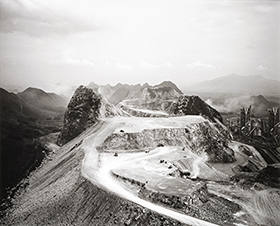 |
|
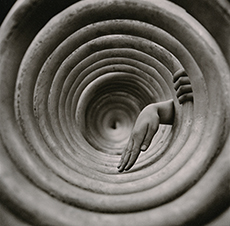 |
|
|
|
| Yang Che-Yi (Taiwan), "Shan Shui (6)" (2008) |
|
Vojtech Vaclav Slama (Czech Republic), "Interpreter" (2001) |
|
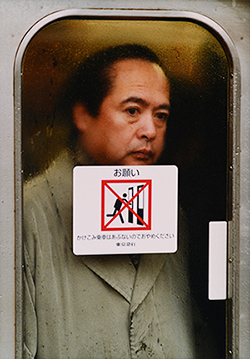 |
|
|
|
Tomoyuki Sakaguchi (Japan), "Window" (2002)
|
For those who haven't made the trip to Kiyosato, the "Young Portfolio" exhibition in Tokyo is an excellent opportunity to learn about the museum's activities and collection. More than 9,000 photographers representing 74 countries have offered their works -- over 100,000 in total -- for consideration as "Young Portfolio" acquisitions. Each year, a panel of three judges -- Hosoe and two colleagues recruited from among Japan's leading photographers -- painstakingly review thousands of entries, from which the museum purchases 200 to 300. To date, the museum has acquired the work of nearly 700 artists from 44 countries. One unique feature of the entry process is that photographers are free to submit works every year up until the age of 35, which has enabled judges to watch over the creative development of a number of promising young artists.
The museum is bringing some 500 pieces from its collection to Tokyo for the exhibition, representing youthful talent from around the world. The show will also include 35 works taken, in their own youth, by the 35 photographers who have served as judges during the annual "Young Portfolio" selection. This is a rare opportunity to see, in one place, the early work of some of Japan's most influential photographers, including Nobuyoshi Araki, Daido Moriyama, and Kishin Shinoyama.
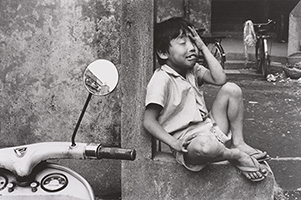 |
|
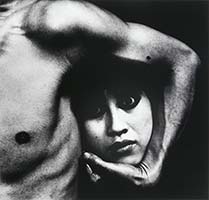 |
|
|
|
| Nobuyoshi Araki, "Sacchin" (1962-63) |
|
Eikoh Hosoe, "Man and Woman #20" (1960)
|
All images courtesy of the Kiyosato Museum of Photographic Arts. |
 |
 |
Alice Gordenker
Alice Gordenker is a writer and translator based in Tokyo, where she has lived for more than 16 years. In addition to writing about the Japanese art scene she pens the "So, What the Heck Is That?" column for The Japan Times, which provides in-depth reports on everything from industrial safety to traditional talismans. She also translates about early Japanese photography. |
|
 |
|